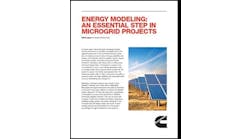Sunnova Energy’s plan to create microutilities in California suffered a blow — although not fatal — this week when an administrative law judge called for its dismissal.
The residential solar developer is carving new territory with its idea to form microgrid-driven microutilities to serve communities with fewer than 2,000 customers.
The concept, which Sunnova brought to the California Public Utilities Commission in September, would make it easier to build community microgrids, now difficult because of rules that protect utility franchise territories. Microgrid developers, clean energy advocates and social justice groups support Sunnova’s plan, while investor-owned utilities and the California Public Advocates Office oppose it.
In a February 14 proposed decision, Administrative Law Judge Colin Rizzo called for the commission to dismiss Sunnova’s application, saying it attempts to sidestep utility codes and create an entity whose rates the commission could not properly regulate (Application 22-09-002).
But Adam Miller, Sunnova’s vice president of microgrids, said the plan actually attempts the opposite.
“Sunnova Community Microgrids of California is not trying to be exempt from regulatory oversight. We're trying to become part of it and live within it,” he said in an interview with Microgrid Knowledge.
Community microgrids often find it difficult to form in California — and other states — because of rules that let only utilities deliver power among multiple neighbors. Sunnova’s solution is to become a utility, or rather a microutility, which is a codified entity in the state for those utilities that serve fewer than 2,000 California customers.
The fight isn’t over, and Miller hopes to see the proposed decision dismissed. Sunnova and other parties have 20 days to respond. Sunnova hopes to win a public hearing before the CPUC on the plan.
Microgrid developers typically shy away from becoming utilities because of the Byzantine regulations utilities face. But that’s beginning to change. In Ohio, a county formed its own utility to more easily pursue microgrid development within its borders. And in Washington, D.C. a microgrid developer has decided to pursue utility status under a state plan to create “lightened regulation” for those who do.
A community microgrid template
California’s Public Advocate Office had criticized Sunnova for not providing more technical specifics about the microutilities. But Miller said the application was not seeking approval of an energy project. Instead, it put forward a template for microutility design that Sunnova and others could then use to bring forward projects, which would then be reviewed in their own right by regulators.
Approving Sunnova’s template would “lower the wall” to get more community microgrids built across the state, he said.
Among those carefully watching the procedure is Schneider Electric, one of the most active microgrid developers in North America.
Jana Gerber, president of Microgrid North America at Schneider, called the motion to dismiss “extremely disappointing.”
“California is a national leader and other states are looking to California to develop and showcase innovative policies that can be replicated,” Gerber said. “The Sunnova application provided analysis which met the bar set by the CPUC’s rules. This decision sets a poor precedent as California, and the nation, look to move toward a more advanced and reliable grid.”
Under a law passed in 2018 (SB 1339), the CPUC has been charged with creating new rules and programs to commercialize microgrids. But microgrid developers have complained that the regulatory process has moved slowly, even as utilities continue to shut off power to customers to prevent wildfires.
"Tragically ironic"
Cameron Brooks, executive director of Think Microgrid, a microgrid advocacy group affiliated with Microgrid Knowledge, called the proposed dismissal “tragically ironic.”
“The commission is saying that there need to be rules put in place for this kind of microgrid, but they are the ones who refuse to create those rules. They say that there should be more information, but they refuse to create a forum to present that same information,” Brooks said.
He added: “The tragedy is that the citizens are the ones who suffer and are increasingly vulnerable to an unstable and dangerously aging electric grid. This is not a story about utility monopoly. It’s a story about a state agency that refuses to comply with a law created five years ago to drive the commercialization of microgrids.”
Allie Detrio, chief strategist of Reimagine Power and one of the lead consultants on the application, called the motion to dismiss “incredibly disappointing and frustrating.”
“The Public Advocates Office is not representing the public interest or the people of California who continue to suffer power outages up and down the state with this motion to dismiss. Communities want microgrids, and attempting to limit new market entrants and innovative solutions like those proposed by Sunnova is counter to the spirit of California's climate goals and tech innovation roots. We hope the CPUC will reconsider its proposed decision and not compromise California's leadership."
The commission could vote on the application as soon as April 6.
Interested in learning more about the California community microgrid incentive program? Join us May 16-17 in Anaheim, California for Microgrid Knowledge 2023: Lights On!








